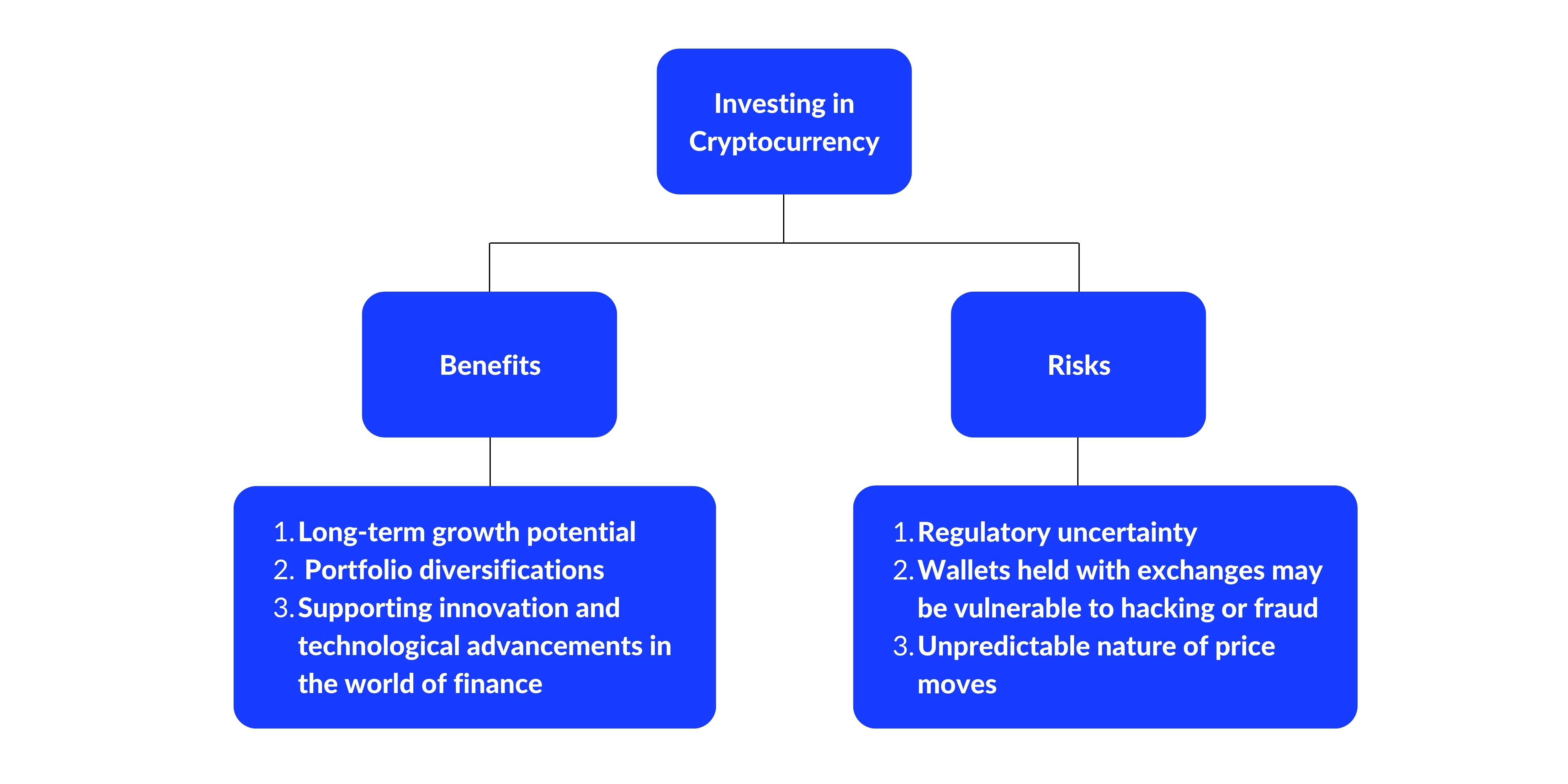Order Cryptocurrencies with Self-confidence: Leading Exchanges and Wallets to Use
Order Cryptocurrencies with Self-confidence: Leading Exchanges and Wallets to Use
Blog Article
The Future of Cryptocurrencies: Patterns to Enjoy in the Upcoming Years
As we look ahead, the landscape of cryptocurrencies is going through profound changes influenced by several key fads. The appearance of Reserve bank Digital Currencies (CBDCs) stands to redefine the assimilation of electronic possessions within conventional financial systems, while increased regulatory analysis might shape the operational landscape for cryptocurrencies. In addition, the advancement of decentralized finance (DeFi) and the expanding relevance of non-fungible symbols (NFTs) promise to alter perceptions of possession and valuation in a digital economic situation. These growths elevate vital concerns about the future trajectory of cryptocurrencies and their duty in our monetary community.
Increase of Reserve Bank Digital Currencies
The introduction of Reserve bank Digital Currencies (CBDCs) stands for a significant shift in the economic landscape as governments discover digital options to traditional fiat money. These state-backed electronic currencies aim to boost the efficiency of settlement systems, promote monetary incorporation, and offer a safe and secure alternative to personal cryptocurrencies. Unlike decentralized electronic currencies, CBDCs operate under the auspices of reserve banks, making sure governing oversight and stability.
A number of nations are actively piloting or investigating CBDCs, with significant instances including China's digital yuan and the European Reserve bank's electronic euro initiative. These efforts highlight a growing acknowledgment of the possible advantages of digital currencies, such as faster deal speeds and minimized prices connected with cross-border repayments. CBDCs could serve as a tool to fight illegal tasks by supplying better openness in purchases.
As the fostering of CBDCs progresses, they may reshape consumer habits and impact international monetary characteristics. The transition to an electronic money structure provides difficulties, including technological infrastructure, cybersecurity concerns, and public depend on. The surge of CBDCs signifies a critical moment that can redefine the duty of cash in an increasingly digital economic situation, necessitating close monitoring by market stakeholders and policymakers alike.
Enhanced Regulatory Analysis

Countries globally are taking different methods, from outright restrictions to regulative sandboxes that allow technology while making sure compliance. The European Union, as an example, is moving towards comprehensive regulations with the Markets in copyright-Assets Law (MiCA), intended at creating a unified technique across participant states. In the United States, companies like the SEC and CFTC are increasingly energetic in issuing standards and enforcement actions.
Companies operating in the copyright area might encounter more stringent conformity needs, which can lead to increased operational expenses. Eventually, the equilibrium in between innovation and policy will shape the future of cryptocurrencies.
Development of DeFi Operatings Systems
Decentralized Financing (DeFi) systems have actually undertaken substantial transformation because their creation, reshaping the standard monetary landscape - order cryptocurrencies. At first, these systems largely concentrated on straightforward functions such as lending and borrowing, facilitated by smart contracts on blockchain networks. The development of DeFi has broadened to encompass a wide array of economic solutions, including derivatives trading, return farming, and automated market-making.
One of the most remarkable advancements is the appearance of Layer 2 remedies, which improve scalability and minimize deal costs, making DeFi more accessible to a more comprehensive target market. Furthermore, cross-chain interoperability has become a crucial focus, permitting customers to transfer assets flawlessly across different blockchain networks. This evolution cultivates higher liquidity and individual engagement.
In addition, the combination of sophisticated administration models has actually equipped neighborhoods to take part in decision-making processes, promoting sustainability and technology within the community. As DeFi remains to mature, we can anticipate more enhancements in user experience via boosted interfaces and safety and security steps, addressing worries that have actually previously prevented mainstream fostering. In general, the trajectory of DeFi systems points toward a much more comprehensive and efficient financial future, using alternatives to traditional financial systems.
Assimilation of NFTs in Finance
In the middle of the fast advancement of the financial landscape, the combination of Non-Fungible Symbols (NFTs) has actually become a transformative force. Generally connected with digital art and go to these guys collectibles, NFTs are now discovering applications in numerous economic sectors, introducing ingenious methods to stand for possession and worth.
One significant area of integration is in property, where NFTs can streamline building transactions. By tokenizing real estate assets, purchasers can take pleasure in fractional possession, lowering access obstacles and raising liquidity. order cryptocurrencies. Additionally, NFTs can ensure transparent and immutable records of ownership, boosting trust fund in realty ventures
Worldwide of money, NFTs are additionally being used for decentralized financing (DeFi) applications, making it look these up possible for collateralization of properties. By making use of NFTs as security, consumers can access loans while retaining possession of their electronic properties. This performance improves the availability of monetary services and advertises an extra inclusive financial ecosystem.
Moreover, the integration of NFTs right into standard financing could revolutionize the means intellectual property civil liberties are handled, offering developers with brand-new earnings streams with wise contracts. Overall, the assimilation of NFTs in financing represents a shift in the direction of more cutting-edge, effective, and clear financial remedies, paving the method for future innovations.
Advancements in Blockchain Innovation

One significant fad is the development of Layer 2 options, designed to improve scalability and deal rates, therefore addressing the restrictions of main blockchain networks. These options make it possible for faster processing of deals, minimizing costs and raising performance, which is important for mass adoption.
Moreover, interoperability between different blockchain networks is getting grip. This growth permits smooth information exchange and property transfers throughout varied systems, advertising an extra linked and reliable ecological community. Methods that facilitate cross-chain communication are important for promoting partnership among decentralized applications (copyright) and improving individual experiences.
Furthermore, improvements in agreement devices, such as proof-of-stake and delegated proof-of-stake, are adding to more energy-efficient and secure blockchain operations. These technologies not just attend to ecological issues however also enhance network strength.
As blockchain modern technology remains to develop, its combination into various fields, consisting of financing, supply chain, and healthcare, will certainly redefine typical systems, leading the method for a decentralized future.
Conclusion
In conclusion, the future of cryptocurrencies is identified by transformative patterns that will form the monetary landscape. The development of Central Bank Digital Currencies will certainly improve the integration of electronic properties into traditional economic systems. Simultaneously, regulatory structures will evolve, advertising institutional investment while ensuring customer security. In addition, the constant development of decentralized money platforms and blockchain modern technology, together with the integration of non-fungible symbols, will redefine ownership and monetary purchases, cultivating boosted fostering and technology within the sector.
Report this page